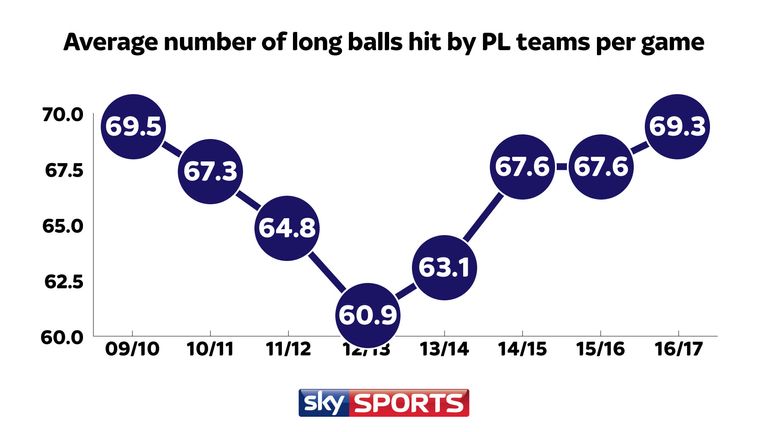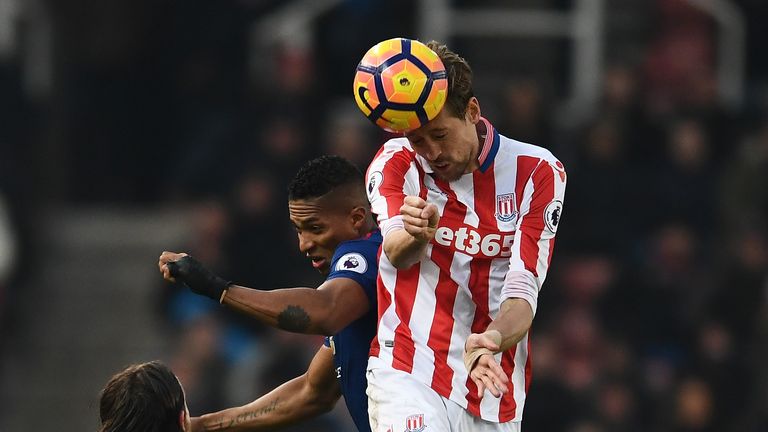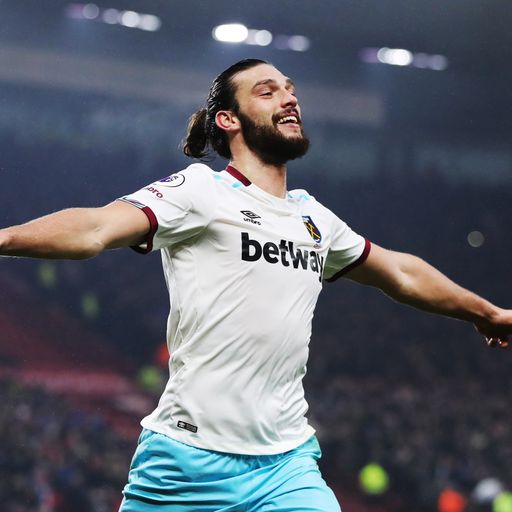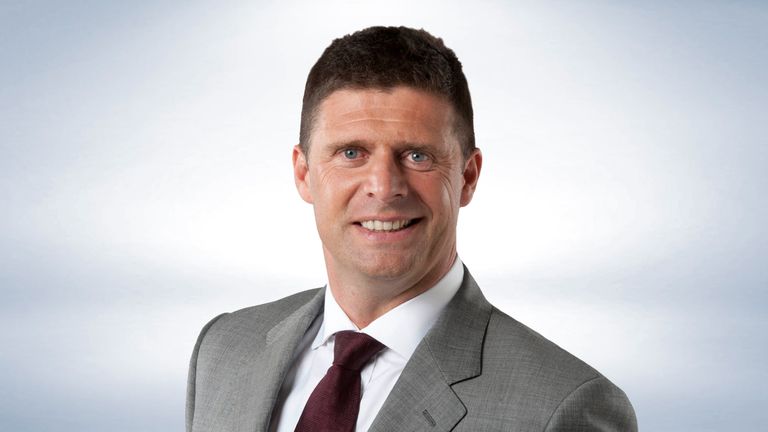Is the target man back in fashion? Why they still have a role to play

Tuesday 7 February 2017 17:16, UK
With Andy Carroll and Peter Crouch in the goals, is the target man back in fashion? There are reasons to believe in the big man, writes Adam Bate.
"The thing about me is I've always been in and out of fashion," said Peter Crouch in an interview with the Telegraph earlier this season. "Mainly out, actually." But just a couple of months on and the target men of the Premier League are reminding us all exactly what they can do.
In fact, Crouch is getting loads of love after joining the Premier League's 100 club. Having gone goalless last season, the 6ft7in target man has actually scored more goals in the competition since New Year's Eve - four in his last six games - than he had in the previous two years.
Meanwhile, Andy Carroll is causing problems once more. Elsewhere, there's Zlatan Ibrahimovic and Olivier Giroud, Christian Benteke and Fernando Llorente, Sam Vokes, Salomon Rondon and Troy Deeney. So is the return of the big man really a thing and if it is then why?
What do the stats say?
Unusually, there have been exactly 180 headed goals in each of the past two Premier League seasons so that provides a good benchmark for what to expect. There have been 124 already in the current campaign so the 200 mark is on course to be broken in May.
After a steep decline in usage, the number of long balls hit per Premier League game is also back up to the levels of seven years ago and has actually been steadily increasing for each of the past five seasons. So why is it happening?
A response to pressing?
Arguably the biggest change in the Premier League in recent times has been the renewed focus on the importance of a high-intensity pressing game. Closing the ball down is not new but Jurgen Klopp, Mauricio Pochettino and Pep Guardiola place huge emphasis on pressing.
The way to beat a press is to go over it. Pressing teams are happy for opponents to do that as a long pass is more likely to be low in quality, but the easiest way to improve its effectiveness is to have a player who can make it stick. Louis van Gaal worked that out against Liverpool.
"Louis felt that the way out of their press was to look to bypass their midfield when it was possible and that was done by going long to Marouane Fellaini," explained Ryan Giggs in his Telegraph column. "We needed to play the game in their half of the pitch.
"As a passing team we'd back ourselves to get out of their press … But you also realise that with the tempo they create, especially at Anfield, that you also need to vary that and try to put yourself in the driving seat where you are applying pressure direct to the opposition."
Changes in formation?
Tactics are cyclical with one change unexpectedly sparking another. Football is a complex ecosystem and another theory to explain the big man's return is that the rise of the 3-4-3 formation has had a butterfly effect in creating more chances for tall target-men to thrive.
The new-look back-three does not simply include three traditional centre-backs. Smaller defenders such as Chelsea's Cesar Azpilicueta and Manchester City's Gael Clichy now find themselves being used more centrally. This can be a good match-up for the big man.
Interestingly, all four of Crouch's Premier League goals this year have come against teams playing three at the back. Only one of those goals was a header but perhaps the very presence of the lanky striker in the team was a tactical response to the opposition's setup.
The lost art of defending?
It's not just erstwhile full-backs who have found their job description changing this season. The skill-set of the central defender has been evolving for some time. An increased focus on the importance of passing over physical strength can leave the modern defender vulnerable.
Is it possible that the big man poses problems teams have forgotten how to solve? "A breed of defenders have evolved who spend their whole time in training defending their goals against tippy-tappy and false nines," wrote Niall Quinn recently in his Sky Sports column.
"In the era of thoughtful and creative centre-halves, some teams have lost the art of defending against a big bruiser who can outjump them all for one of those unfashionable long balls, and put an elbow in your face and the ball in the net in the same movement."
A cheap way to get goals?
Maybe coaches further down the division are wiser than ever to this possibility and are taking advantage of it on the pitch - and in the transfer market. With the target man unfashionable, even the very best are having to go where they are appreciated.
Ex-Liverpool strikers Carroll and Benteke are at West Ham and Crystal Palace respectively. Llorente, a World Cup winner, is at Swansea. How else can such clubs acquire what Slaven Bilic calls an "unstoppable" asset? David didn't engage Goliath in hand-to-hand combat.
"Too many teams are too quick to dismiss the impact a target man can have," argued former Premier League golden boot winner Chris Sutton in the Mail. "So many teams are missing a trick … Why not keep a big striker to give you some variety?"
Conclusion
The big man had become a marginalised figure in the English game, regarded at best as a plan B and at worst as an anachronism. But the more things change, the more they stay the same and football's newest trends have created the conditions for his return.
Whether it is 3-4-3 or pressing, a new style of centre-back or old ideas about getting the ball into the box, circumstances have conspired to put the big man back centre stage. "In the Premier League, the big man is more important than he ever was," said Quinn.
But perhaps it's best to leave the final word to that biggest of big men. In a world of hybrid forwards, he is the specialist of all specialists. And just as Peter Crouch anticipated, his type look set to endure. "I reckon there will always be a place for someone like me."










